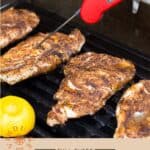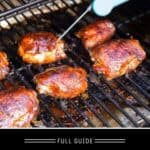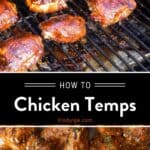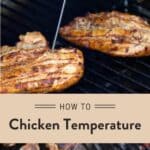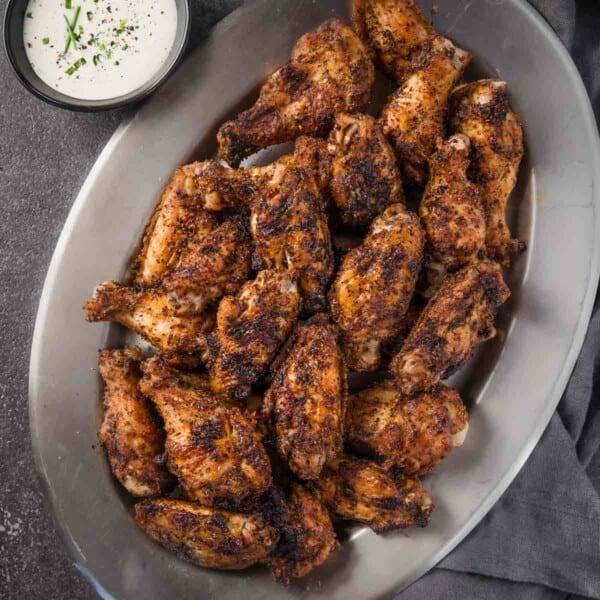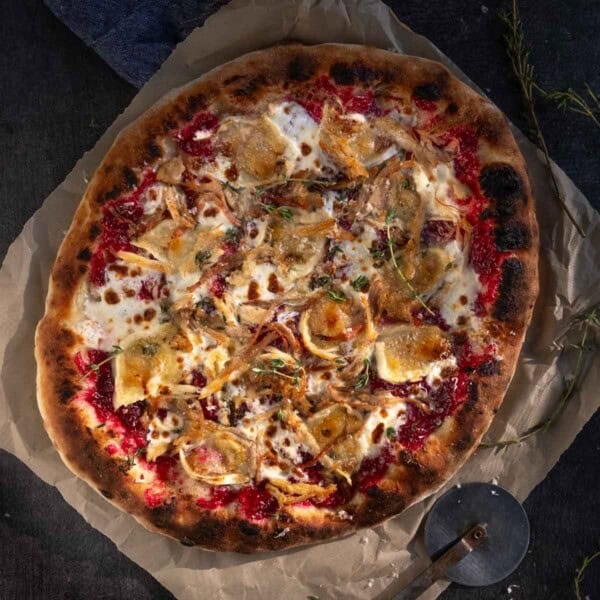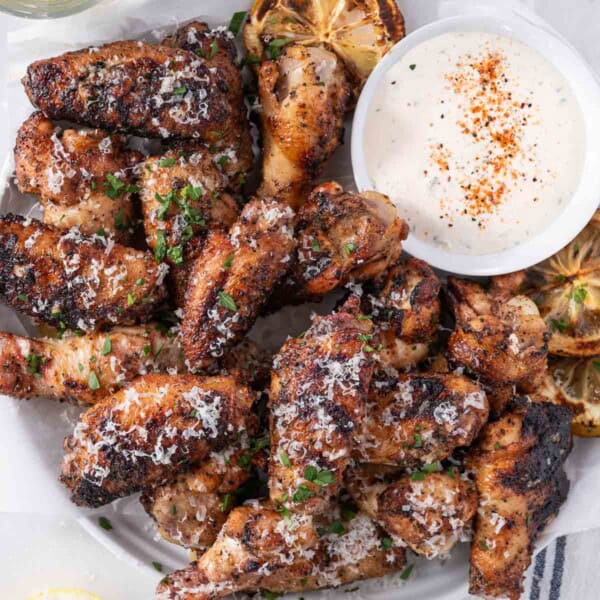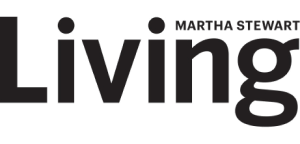Chicken Temperature – The Ultimate Guide For When Chicken Is Done
Sep 27, 2022, Updated Oct 24, 2024
This post may contain affiliate links. Read more at our disclosure policy.
If you think perfectly cooked chicken is as easy as cooking to an internal temperature of 165 degrees Fahrenheit (F) then may be overcooking (or undercooking) your chicken. The real secret to perfectly cooked chicken temperature is to understand that it’s both the temperature and how long the chicken is at that temperature that will result in perfectly juicy chicken.
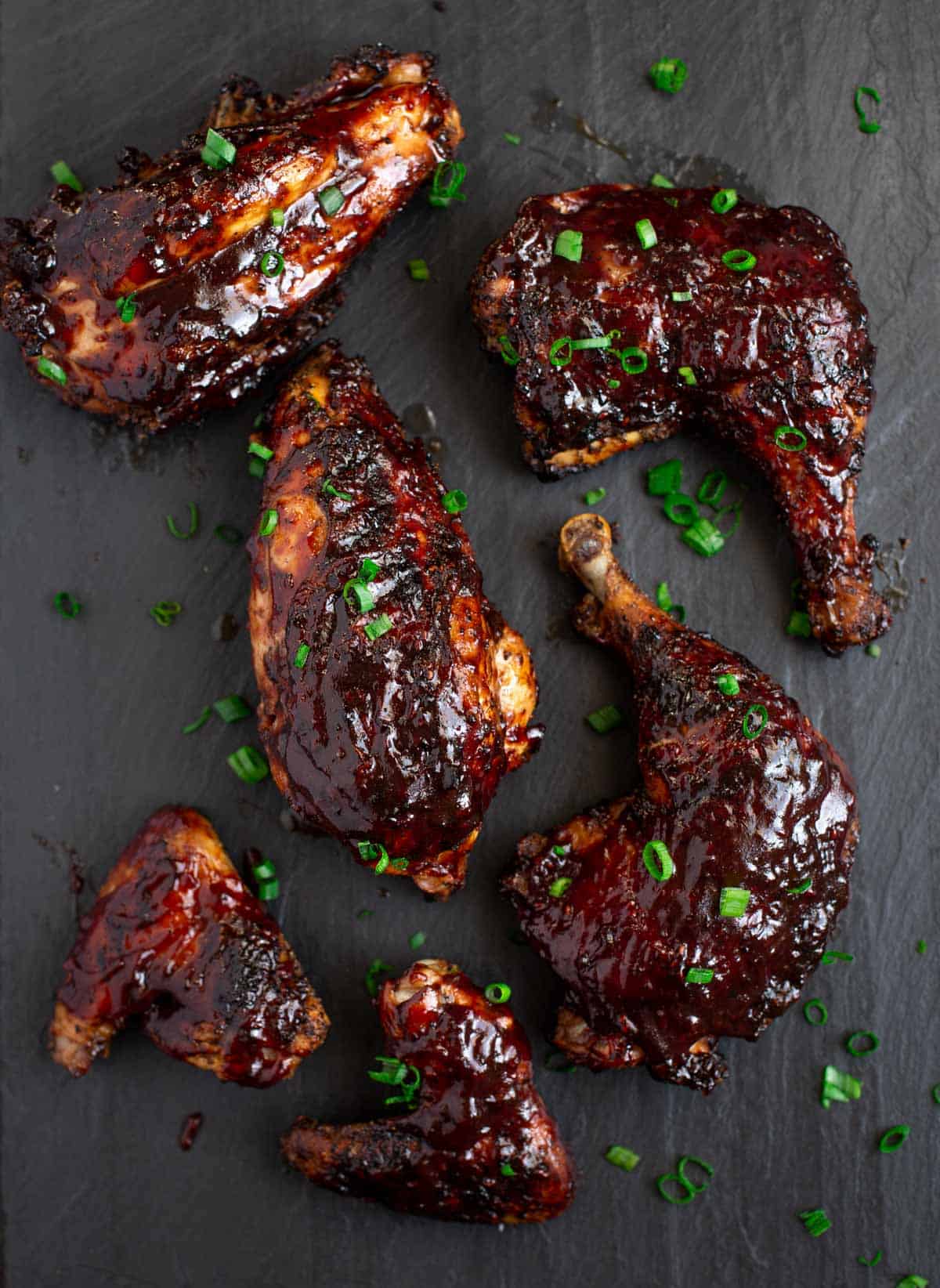
Vindulge Article Highlights
- Perfectly cooked chicken comes down to understanding pasteurization temp and time and carry over cooking.
- Don’t waste your time letting chicken come to room temperature before cooking.
- It’s important to invest in a good instant read thermometer.
- For ground chicken we still recommend cooking to an internal temp of 165 degrees F.
Perfectly cooked chicken temperature comes down to understand pasteurization temp and time, carryover cooking, and the cut of chicken you are cooking.
Table of Contents
Background
Chicken is the number one protein consumed in the United States according to the USDA (per capita) and is one of the most searched on the web. And for years we’ve learned (for good reason) that we don’t want to undercook chicken.
But so often chicken is overcooked because of how nervous people get and then it is just not as enjoyable. Learn the secrets to the perfect chicken temperature so you can be the cooking hero in your household.
The USDA encourages chicken to be cooked to 165 degrees F to kill any bacteria. And while that is true when trying to recommend one general temperature to an entire population and various cooking styles, there is a process when cooking chicken that is important and plays into when you pull your chicken for the dinner table.
By holding chicken at lower internal temperatures for longer periods of time, you can still kill off the harmful bacteria and achieve the best flavor and texture.
Pasteurization
Before we dive into the perfect chicken temperature we first need to discuss the importance pasteurization has in eliminating foodborne pathogens. The simple definition of pasteurization is the partial sterilization of a food product. Often you hear it related to milk but it’s also used with other foods as well.
When you heat food up there are certain internal temperature ranges that will kill bacteria, like salmonella at 165 degrees F. However, the key to pasteurization is that you can also achieve the same thing at lower temperatures but holding that lower temperature for a longer period of time.
- At 165 degrees F the bacteria is killed instantly
- At 155 degrees F it will kill the bacteria just after 54.4 seconds
This also refers to the temperature measured at the thickest point of the chicken and assuming a fat percentage of 12%. The leaner the chicken the less time you need.
If you are cooking an entire roast in the oven you have to be sure you are taking the temperature in both the center of the chicken breast and the thigh.
Thermoworks has a very detailed article about the nuances of internal chicken temperature and how long it needs to be held for safe cooking using USDA pasteurization tables.
Want to really geek out to the details? Check out the USDA FSIS bulletin with the various charts. (page 37 to be specific)
Chef’s Note: For boneless chicken breast, consider pounding the thicker part of the breast so it’s even from end to end.
Carry Over Cooking
Carry over cooking is when you pull the meat off of the heat source, and the temperature in the center most part of the meat continues to rise in temperature as heat travels from the warmer outer portion of the meat, to the inner or cooler portion of the meat. The larger the cut, the more the temperature will “temp up.”
When cooking chicken the heat generated from your fuel cooks from the outside of the meat in. Heat wants to travel from hot to cold, so when you are cooking chicken, you can target 155 degrees as the finished temperature (or whatever your desired finishing temp is), Once you pull, it will sit at that temperature over 1 minute and even continue to rise by 2-3 degrees.
The combination of this means that you have properly pasteurized the chicken and it’s safe to eat.
Thermometer
Ditch any old dial thermometer you may currently be using and invest in a good quality instant read thermometer. There are many at multiple price points.
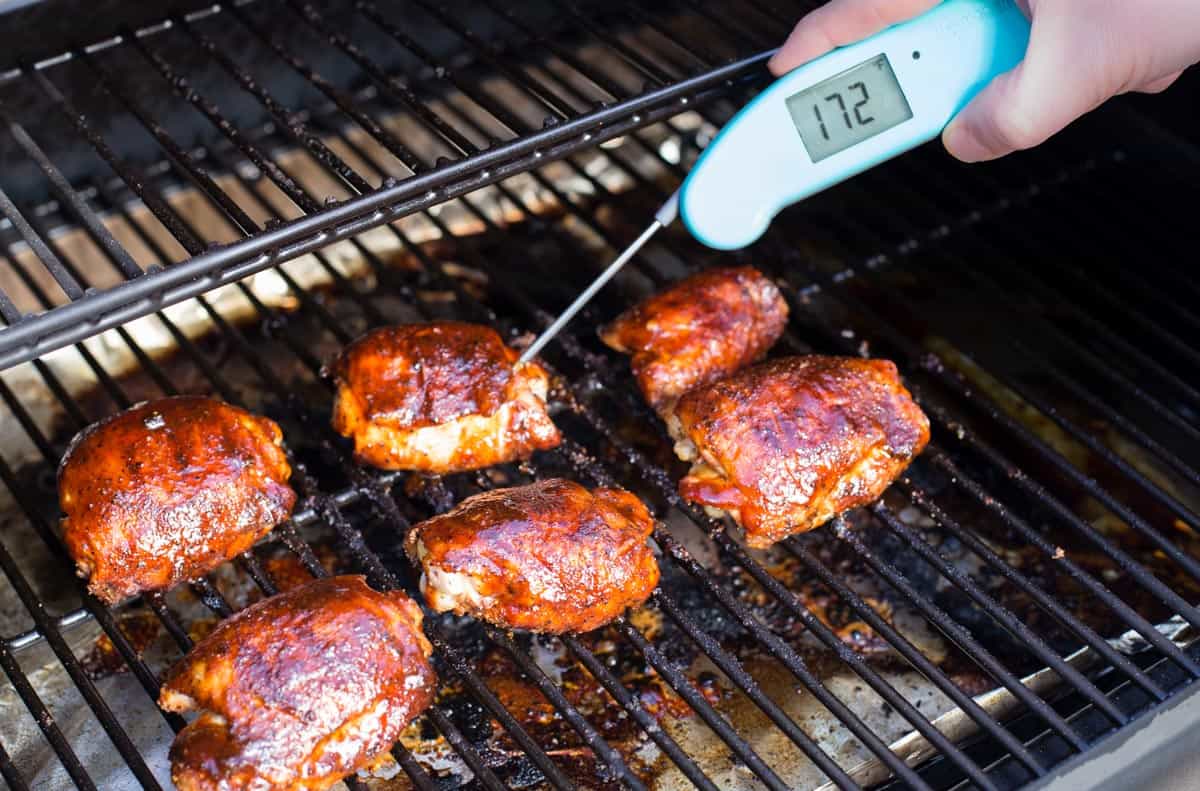
Our two favorite are the Thermoworks Thermapen One ($105) and the Thermoworks Thermopop ($35).
Would you like to save this?
How to Take the Temperature of Chicken
As you pass a digital thermometer through the chicken, you are always using the lowest temperature as the target, and making sure to insert the probe into the center of the thickest part of the meat, NOT touching bone.
Individual Chicken Breast Internal Temp
Whether grilled chicken breast or oven roasted, cook chicken breast to an internal temp of 155 degrees as noted above and let rest for carry over cooking.
If you are cooking a boneless skinless chicken breast then prepare it first by lightly pounding it out so it’s relatively the same thickness from end to end. It will speed up the cooking process as well.
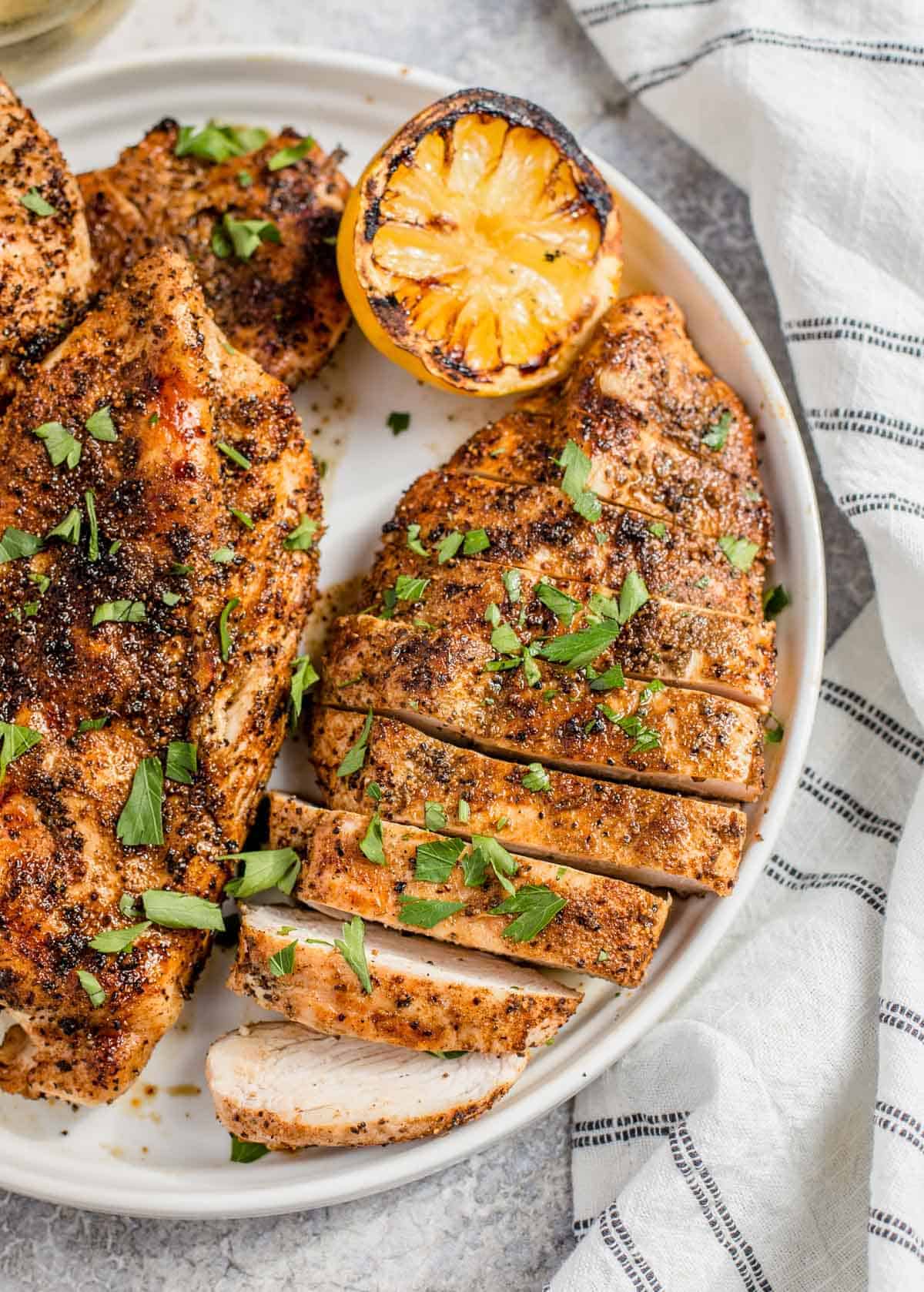
For bone-in chicken breast one side will be thicker and it’s not practical to pound it down. So measure the temperature at the thickest part of the breast.
Chicken Leg and Thigh Internal Temp
The ideal temp for chicken legs and chicken thighs is 175 degrees F, then let carry over cooking occur.
Unlike the chicken breast, the chicken legs and thighs should be cooked to a higher internal temperature rendering the intramuscular fat and crispier skin.
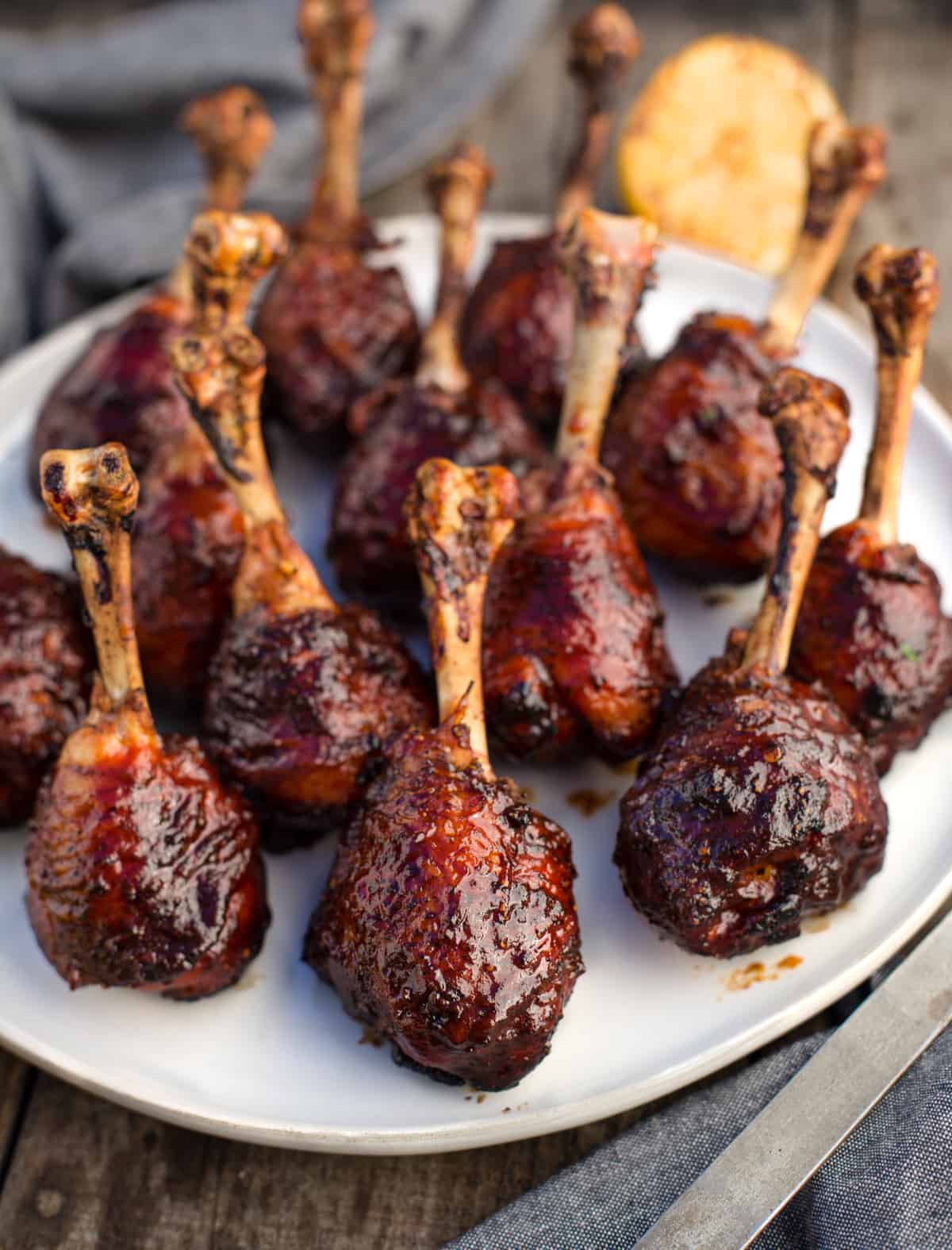
Internal Temp of Chicken Wings
The internal temp of chicken wings (drums or flats) should be cooked to 175 degrees F. Like a leg or thigh, the higher temperature renders the fat and gives crispier skin.
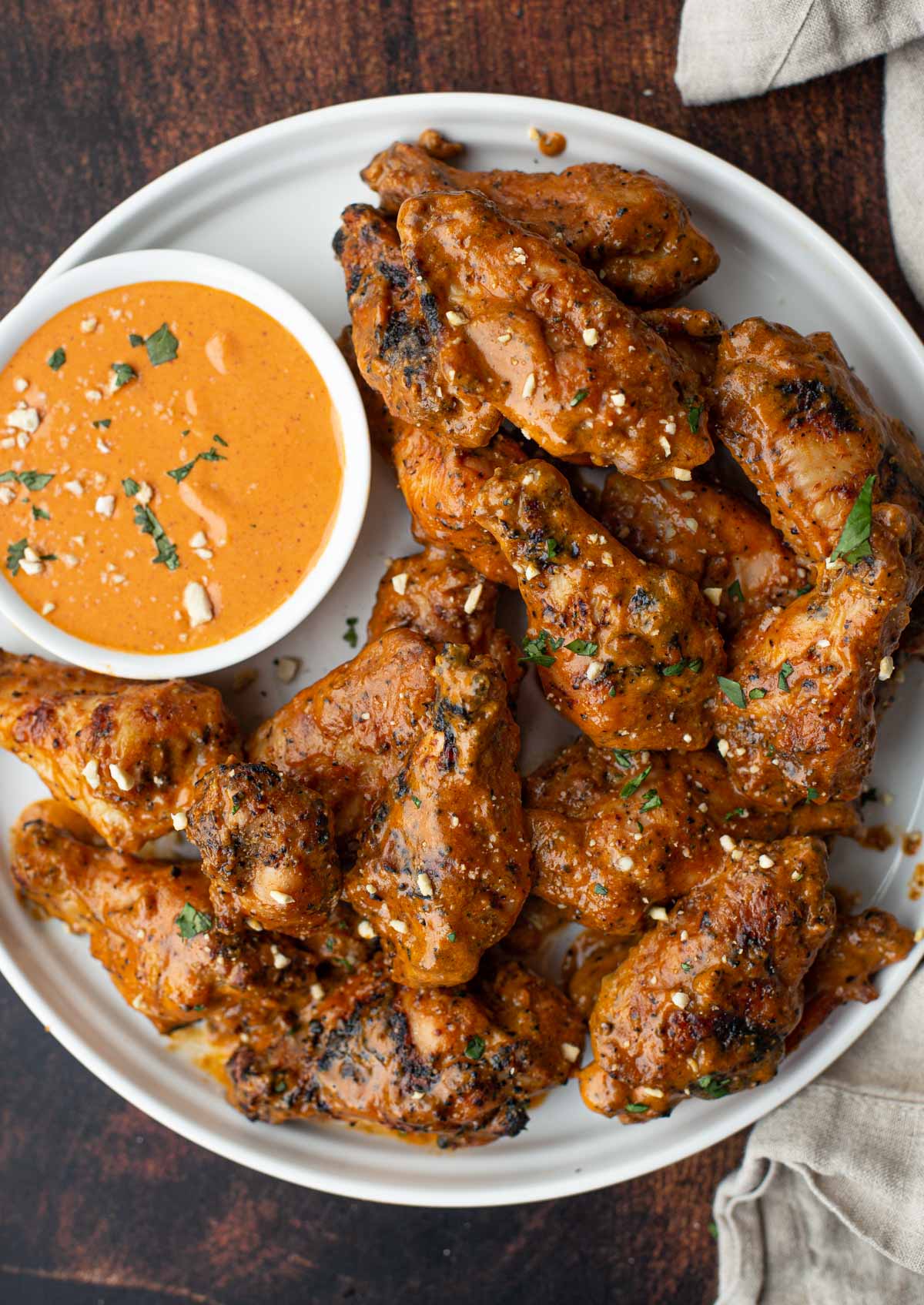
What About Turkey Temperature
While this article focuses on chicken the concept applies to turkey temperature as well. Because turkey is a larger cut of meat the timeframes are different. Times assuming a 12% fat level (leaner turkey will take less time).
- If cooking the turkey to 155 you must hold the temperature for 1.2 minutes.
- If cooking the turkey to 160 degrees then it’s 29.6 seconds.
When cooking turkey like our smoked turkey, the thigh will cook faster than the breast. So base your times on the lowest temperature recorded and begin the holding time. In most cases with turkey the thigh will be 175 while the breast is at 160 which is when to consider letting it rest.
Chicken Recipes
We encourage you to use this chicken temperature guide as you cook any of our chicken recipes whether grilled or smoked. Here are some of our favorites:
- Grilled Blackened Chicken Breast
- Smoked Whole Roaster Chicken
- Grilled Buffalo Chicken Wings
- Glazed BBQ Chicken
Tried this recipe? Give us a star rating and we would love to see! Mention @vindulge or use the hashtag #vindulge on all the social media handles. And consider subscribing to our newsletter where we drop all our favorite ideas and inspirations every week.
